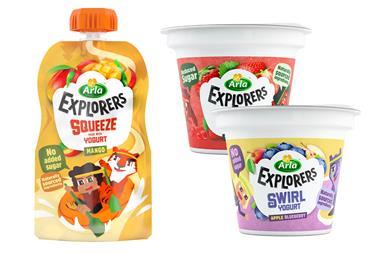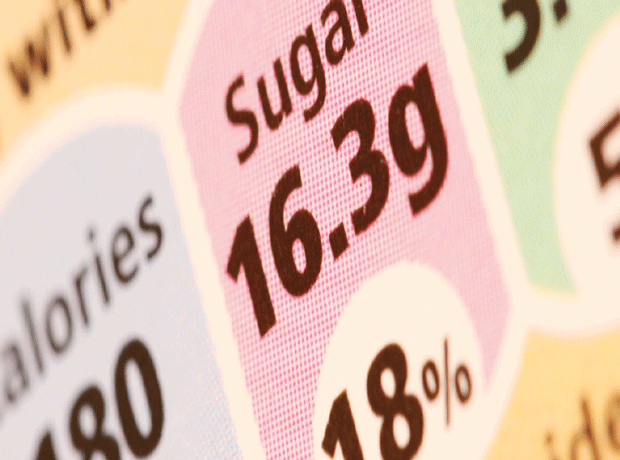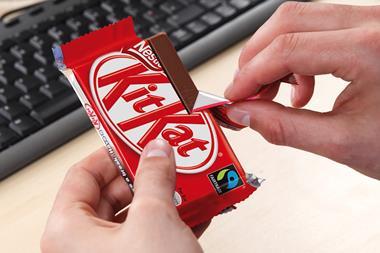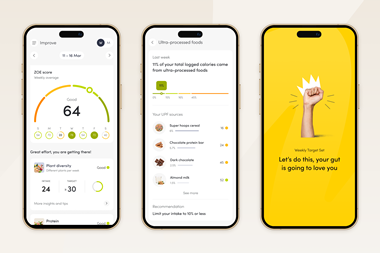
Supermarket yoghurts contain more sugar than Coke’, screamed the nationals last week as they bemoaned the findings of a new study revealing the “shocking” levels of the white stuff in pots aimed at children. Researchers at Leeds and Surrey University analysed nutritional data on 101 kids’ yoghurts on sale in UK supermarkets in November 2016 and found just two would be classed as ‘low sugar’, with the “vast majority” containing sugar levels “well above” the 5 g total sugars/100 g threshold required to carry a green ‘traffic light’ nutritional label.
And things could be about to get much worse for manufacturers. Officials at PHE are considering a revised nutrient profiling model that would see most fruit-flavoured kids’ yoghurts branded junk food. The category is set to be the worst affected by the proposed changes to the model, which is used to determine whether foods are HFSS (high in fat, salt and sugar) and banned from advertising to children.
But are kids’ yoghurts being unfairly demonised?
According to the Leeds and Surrey University study, which prompted last week’s headlines, just 2% of yoghurts on sale in the UK in November 2016 would be classed as ‘low sugar’, with many containing levels “well above” the 5g total sugars/100g threshold required to carry a green ‘traffic light’ nutritional label. And things haven’t changed much since then. Research commissioned by The Collective found just two yoghurts currently on sale in the UK come under the 5g total sugars per 100g threshold.
The Collective’s own range of Suckies had an average total sugar content of 8.1g per 100g, while rival Petit Filous’ range of Fromage Frais had 9.9g per 100g and Frubes had 11.6g per 100g on average.
As The Collective’s CEO and co-founder Amelia Harvey points out, “there is a big spectrum in terms of what’s out there in the market. Some children’s yoghurts are just sweetened by fruit, while others have lots of added sugar.”
But hardly any would score a ‘green light’ for sugar under current traffic light labelling rules because “the lactose in a yoghurt means it will start at a base rate of 5g-6g per 100g. Fruit or juice concentrate will add to that,” Harvey says.
The importance of being earnest: The Dairymen yoghurt report 2018
Paediatric dietician Judy More thinks yoghurts are being unfairly penalised by the Europe-wide labelling laws, which require total sugars including lactose-to be used on labels. “Lactose is a natural sugar in milk and doesn’t need to be restricted in the same way free sugars do,” she says. “It would be better if they required you to say what the content of free sugars was.”
Free sugars exclude lactose but include sugar honey, syrups and processed fruit such as fruit puree where all the cells are broken down and fruit sugar exudes into the puree (as well as sugar cane/beet sugar). They are the main focus of the government’s fight against obesity, with the Scientific Advisory Committee on Nutrition (SACN) recommending they make up no more than 5% of daily calorie intake.
PHE is focusing on free sugars for its proposed new nutrient profiling model, which is used to determine whether products can be advertised during children’s television programming and non-broadcast media, meaning the lactose content of yoghurts won’t be counted. But PHE has also drastically reduced the sugar threshold to bring the new model in line with the SACN recommendation. As such, while products previously had to contain less than 21g total sugar per 100g to pass the NPM, they would have to contain less than 5g free sugars per 100g under the proposed changes.
This tough new threshold means just 20 (30%) of the 65 yoghurts and fromage frais in the dataset analysed by PHE would pass the new NPM. And General Mills, which owns the Petit Filous brands, warns the impact on yoghurts aimed at kids’ will be much bigger. “Our estimation indicates that it may be only approximately 13% of yogurts that would pass if natural/no added sugar yogurts were excluded,” it said in its response to the PHE consultation.
Even Petits Filous Fromage Frais, which was featured in PHE’s Change4Life smart snacking campaign as a healthy alternative, would fail under the new NPM. With 9.9g of total sugar per 100g the brand has exceeded the original industry targets for reformulation by 2020, despite cutting sugar by 17%, and would have to cut free sugars by another 40% to pass the proposed new model.
This seeming mismatch with the government’s existing healthy eating advice threatens to confuse parents and derail industry progress on reformulation, brands warn. And with the proposed sugar threshold almost impossible for most fruit-flavoured yoghurts to reach, even brands that have invested heavily in reducing sugar over recent years face the same advertising restrictions as those that haven’t.
Of course, the threat of not being able to advertise directly to children is not one all brands will fear, as marketing is often aimed at parents. However, the government is also considering a 9pm watershed for HFSS TV ads under its Childhood Obesity Chapter 2 and a ban on supermarket promotions of HFSS foods.
This could have unintended negative consequences for children’s health, some experts fear. In its response to the PHE consultation, the British Dietetic Association raised concerns brands might be tempted to pump their products full of sweeteners to pass the revised test, and warned there could also be “unintended consequences” to branding “nutritionally superior” yoghurts as ‘junk food’ alongside cakes and biscuits in the public eye.
Yeo Valley and Rachel’s hit as Waitrose resets yoghurts aisle
More agrees, pointing out yoghurts, milk and cheese are important sources of calcium, iodine and vitamin A, which are vital for the development of healthy bones, brains and immune systems. “There aren’t other foods that provide those nutrients in as good a quantity.”
While some yoghurt’s do contain levels of free sugars that are “too high”, it’s not helpful for health chiefs to make parents feel guilty about giving their children nutrient-rich foods, she insists. “The issue as I see it is that PHE is tasked with fighting obesity, not with making sure we are all eating a nutritious diet,” More adds.
PHE says it is currently reviewing submissions to the NPM consultation and “will respond in due course”. Industry sources suggest a backlash against the proposals by industry, advertising bodies and health experts could force it to reassess its targets. But some believe a much wider reassessment of the government’s approach to health policy is needed to prevent nutritious foods like yoghurts from being penalised. Adds More: “In general the food messages we get from the government and PHE are negative, other than the advice to eat five-a-day. I think it would be better to have a positive message around eating three servings of yoghurt, cheese or milk a day rather than trying to damn them in the way junk food is damned.”















No comments yet